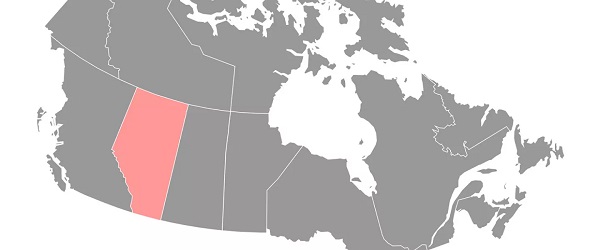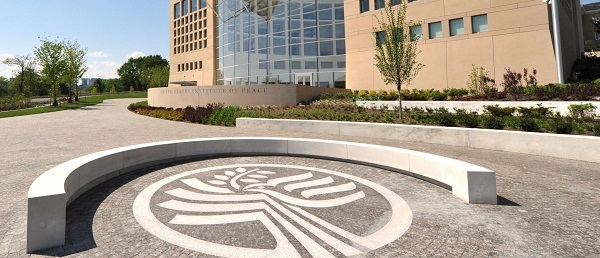Alberta
Shining a spotlight on Alberta athletes, sport leaders

Alberta’s government is continuing to support the Alberta Sports Hall of Fame, so it can showcase the province’s sport legacy for years to come.
The Alberta Sports Hall of Fame celebrates the accomplishments of more than 1,600 Albertans, from Olympic gold medallists to community sport leaders. To continue supporting this long-standing legacy, the government is providing $302,500 to the Alberta Sports Hall of Fame Museum. This funding will support the operations of the facility and the organization’s management and delivery of the annual Alberta Sport Recognition Awards.
“Alberta’s future is stronger when we understand and preserve our history and celebrate our successes. Places like the Alberta Sports Hall of Fame help us do just that. I’m proud our government is supporting it, as it spotlights Albertans with incredible athletic achievements and community contributions.”
“The Alberta Sports Hall of Fame has long been a cherished attraction in our community, offering Albertans inspiration and a window into the remarkable legacy of our athletes and community sport leaders. With our government’s investment in this institution, Red Deer’s tourism will undoubtedly grow, bringing significant benefits to our community and surrounding areas.”
“I am pleased to see the government’s support for the Alberta Sports Hall of Fame continue. This organization enriches the sport community in central Alberta, inspires the next generation of athletes and preserves our province’s history in sport excellence.”
The Hall of Fame provides a space where the accomplishments of the sport community in Alberta are preserved and inspires the province’s future athletes and community leaders. Albertans recognized in the Hall of Fame include Melody Davidson, who was inducted in 2008 for her excellence in hockey, serving as a two-time Olympic gold medal-winning head coach for Team Canada women’s hockey, and Lanny McDonald, who was inducted in 1993 following a long and successful career in professional hockey. Last year, 12 inductees were nominated, including Patrick Jarvis and Theresa Maxwell for their success in Paralympics and volleyball.
This funding will ensure that Albertans can continue to celebrate the province’s turning-point moments and growing legacy in sport.
“We are grateful for the support we have received from the Alberta government. Their funding has played a pivotal role in sustaining the Alberta Sports Hall of Fame, allowing us to preserve and celebrate the rich sporting history of our province. This support not only enhances our ability to showcase the achievements of the athletes, teams and sport champions but also reinforces the significant role sport plays in our community.”
“Red Deer proudly stands as a hub for sports excellence, and the Alberta Sports Hall of Fame plays a pivotal role in preserving and promoting our province’s rich athletic legacy. The City of Red Deer is grateful for the Alberta government’s continued support, ensuring that this institution continues to inspire future generations by showcasing the remarkable achievements of our athletes and community leaders.”
The Alberta Sports Hall of Fame helps grow tourism in Red Deer and the surrounding area by attracting visitors to the facility to enjoy interactive sport-oriented games and activities and sport memorabilia. In the past two years, an estimated 20,000 people have visited the Hall of Fame annually. Exhibits on different sports and sport organizations, including the Hall of Fame Gallery that showcases the athletes and sport builders who have been inducted annually since 1957, are also available to view.
Related information
2025 Federal Election
Next federal government should recognize Alberta’s important role in the federation

From the Fraser Institute
By Tegan Hill
With the tariff war continuing and the federal election underway, Canadians should understand what the last federal government seemingly did not—a strong Alberta makes for a stronger Canada.
And yet, current federal policies disproportionately and negatively impact the province. The list includes Bill C-69 (which imposes complex, uncertain and onerous review requirements on major energy projects), Bill C-48 (which bans large oil tankers off British Columbia’s northern coast and limits access to Asian markets), an arbitrary cap on oil and gas emissions, numerous other “net-zero” targets, and so on.
Meanwhile, Albertans contribute significantly more to federal revenues and national programs than they receive back in spending on transfers and programs including the Canada Pension Plan (CPP) because Alberta has relatively high rates of employment, higher average incomes and a younger population.
For instance, since 1976 Alberta’s employment rate (the number of employed people as a share of the population 15 years of age and over) has averaged 67.4 per cent compared to 59.7 per cent in the rest of Canada, and annual market income (including employment and investment income) has exceeded that in the other provinces by $10,918 (on average).
As a result, Alberta’s total net contribution to federal finances (total federal taxes and payments paid by Albertans minus federal money spent or transferred to Albertans) was $244.6 billion from 2007 to 2022—more than five times as much as the net contribution from British Columbians or Ontarians. That’s a massive outsized contribution given Alberta’s population, which is smaller than B.C. and much smaller than Ontario.
Albertans’ net contribution to the CPP is particularly significant. From 1981 to 2022, Alberta workers contributed 14.4 per cent (on average) of total CPP payments paid to retirees in Canada while retirees in the province received only 10.0 per cent of the payments. Albertans made a cumulative net contribution to the CPP (the difference between total CPP contributions made by Albertans and CPP benefits paid to retirees in Alberta) of $53.6 billion over the period—approximately six times greater than the net contribution of B.C., the only other net contributing province to the CPP. Indeed, only two of the nine provinces that participate in the CPP contribute more in payroll taxes to the program than their residents receive back in benefits.
So what would happen if Alberta withdrew from the CPP?
For starters, the basic CPP contribution rate of 9.9 per cent (typically deducted from our paycheques) for Canadians outside Alberta (excluding Quebec) would have to increase for the program to remain sustainable. For a new standalone plan in Alberta, the rate would likely be lower, with estimates ranging from 5.85 per cent to 8.2 per cent. In other words, based on these estimates, if Alberta withdrew from the CPP, Alberta workers could receive the same retirement benefits but at a lower cost (i.e. lower payroll tax) than other Canadians while the payroll tax would have to increase for the rest of the country while the benefits remained the same.
Finally, despite any claims to the contrary, according to Statistics Canada, Alberta’s demographic advantage, which fuels its outsized contribution to the CPP, will only widen in the years ahead. Alberta will likely maintain relatively high employment rates and continue to welcome workers from across Canada and around the world. And considering Alberta recorded the highest average inflation-adjusted economic growth in Canada since 1981, with Albertans’ inflation-adjusted market income exceeding the average of the other provinces every year since 1971, Albertans will likely continue to pay an outsized portion for the CPP. Of course, the idea for Alberta to withdraw from the CPP and create its own provincial plan isn’t new. In 2001, several notable public figures, including Stephen Harper, wrote the famous Alberta “firewall” letter suggesting the province should take control of its future after being marginalized by the federal government.
The next federal government—whoever that may be—should understand Alberta’s crucial role in the federation. For a stronger Canada, especially during uncertain times, Ottawa should support a strong Alberta including its energy industry.
Alberta
Province announces plans for nine new ‘urgent care centres’ – redirecting 200,000 hospital visits

Expanding urgent care across Alberta
If passed, Budget 2025 includes $17 million in planning funds to support the development of urgent care facilities across the province.
As Alberta’s population grows, so does the demand for health care. In response, the government is making significant investments to ensure every Albertan has access to high-quality care close to home. Currently, more than 35 per cent of emergency department visits are for non-life-threatening conditions that could be treated at urgent care centres. By expanding these centres, Alberta’s government is enhancing the health care system and improving access to timely care.
If passed, Budget 2025 includes $15 million to support plans for eight new urgent care centres and an additional $2 million in planning funds for an integrated primary and urgent care facility in Airdrie. These investments will help redirect up to 200,000 lower-acuity emergency department visits annually, freeing up capacity for life-threatening cases, reducing wait times and improving access to care for Albertans.
“More people are choosing to call Alberta home, which is why we are taking action to build capacity across the health care system. Urgent care centres help bridge the gap between primary care and emergency departments, providing timely care for non-life-threatening conditions.”
“Our team at Infrastructure is fully committed to leading the important task of planning these eight new urgent care facilities across the province. Investments into facilities like these help strengthen our communities by alleviating strains on emergency departments and enhance access to care. I am looking forward to the important work ahead.”
The locations for the eight new urgent care centres were selected based on current and projected increases in demand for lower-acuity care at emergency departments. The new facilities will be in west Edmonton, south Edmonton, Westview (Stony Plain/Spruce Grove), east Calgary, Lethbridge, Medicine Hat, Cold Lake and Fort McMurray.
“Too many Albertans, especially those living in rural communities, are travelling significant distances to receive care. Advancing plans for new urgent care centres will build capacity across the health care system.”
“Additional urgent care centres across Alberta will give Albertans more options for accessing the right level of care when it’s needed. This is a necessary and substantial investment that will eventually ease some of the pressures on our emergency departments.”
The remaining $2 million will support planning for One Health Airdrie’s integrated primary and urgent care facility. The operating model, approved last fall, will see One Health Airdrie as the primary care operator, while urgent care services will be publicly funded and operated by a provider selected through a competitive process.
“Our new Airdrie facility, offering integrated primary and urgent care, will provide same-day access to approximately 30,000 primary care patients and increase urgent care capacity by around 200 per cent, benefiting the entire community and surrounding areas. We are very excited.”
Alberta’s government will continue to make smart, strategic investments in health facilities to support the delivery of publicly funded health programs and services to ensure Albertans have access to the care they need, when and where they need it.
Budget 2025 is meeting the challenge faced by Alberta with continued investments in education and health, lower taxes for families and a focus on the economy.
Quick facts
- The $2 million in planning funds for One Health Airdrie are part of a total $24-million investment to advance planning on several health capital initiatives across the province through Budget 2025.
- Alberta’s population is growing, and visits to emergency departments are projected to increase by 27 per cent by 2038.
- Last year, Alberta’s government provided $8.4 million for renovations to the existing Airdrie Community Health Centre.
Related information
-

 Censorship Industrial Complex12 hours ago
Censorship Industrial Complex12 hours agoWelcome to Britain, Where Critical WhatsApp Messages Are a Police Matter
-

 Economy2 days ago
Economy2 days agoClearing the Path: Why Canada Needs Energy Corridors to Compete
-

 Media17 hours ago
Media17 hours agoTop Five Huge Stories the Media Buried This Week
-

 2025 Federal Election16 hours ago
2025 Federal Election16 hours ago2025 Federal Election Interference from China! Carney Pressed to Remove Liberal MP Over CCP Bounty Remark
-

 Addictions2 days ago
Addictions2 days agoThere’s No Such Thing as a “Safer Supply” of Drugs
-

 Uncategorized15 hours ago
Uncategorized15 hours agoPoilievre on 2025 Election Interference – Carney sill hasn’t fired Liberal MP in Chinese election interference scandal
-

 2025 Federal Election2 days ago
2025 Federal Election2 days agoCanadian Banks Tied to Chinese Fentanyl Laundering Risk U.S. Treasury Sanctions After Cartel Terror Designation
-

 Business2 days ago
Business2 days agoTariff-driven increase of U.S. manufacturing investment would face dearth of workers









